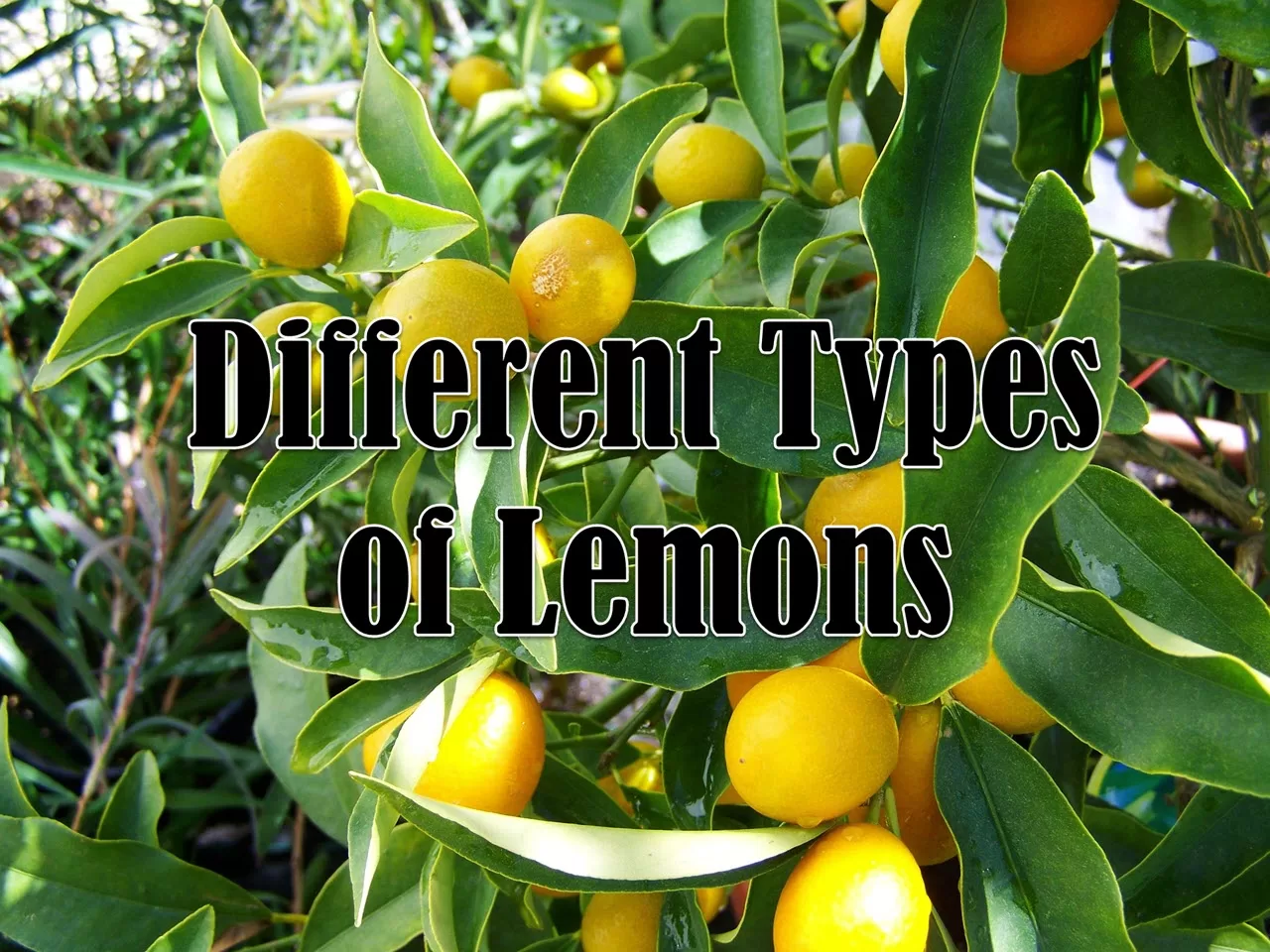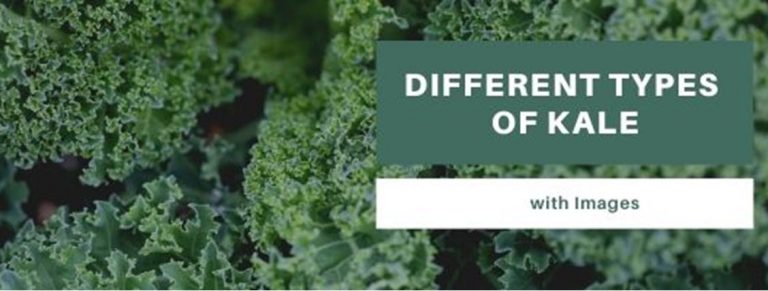9 Different Types of Lemons with Images

Lemons have been popular to the world due to its authentic sour flavor that could elevate the food taste. Aside from using it as an additional ingredient to some recipes, the round citrus lemons are usually turned into a lemon juice or lemonade.
Lemons came from a species of small lemon tree in the flowering plant family Rutaceae. This citrus fruit is native to South Asia, which is North eastern India.
What’s the Difference Between Limes and Lemons
When compared to limes, lemons have bigger oval-shaped lemons with thick yellow skin. Lemons also have a sweeter taste when compared with limes. On the other hand, limes have small, round, and green fruits that are bitter in taste.
Though both fruits also possess almost the same amount of sourness, they also share the same health benefits.
Are Lemons Healthy
The juice extracted in the lemon flesh has about 5 percent of citric acid, which is the reason why lemons have sour taste. Lemons are also rich in vitamin C, that’s why its juice has been used as a treatment to an illness called scurvy.
Vitamin C is also good in preventing common colds and flu, vertigo or a ringing noise inside the ear and it plays an important role in boosting your immunity.
What are the 9 Different Types of Lemons
The different types of lemons can be identical with each other. The determining factor will be their difference in characteristics, their place of origins and the way these different types of lemons have been cultivated.
In this article, you will find information about the different types of lemons and the citrus varieties that are under them. Check out some of the details as you read further.
1. Lisbon Lemons
Lisbon lemons have medium-sized, oblong-shaped lemons with a very protruding nipple on the opposite end of the rounded stem end. This lemon variety also has a smooth and bright yellow medium-thick rind when mature. Its finely fitted oil glands offer an enticing citrusy scent once it’s scratched or rubbed.
Lisbon lemon fruits grow on both dwarf and tall-stature evergreen trees. Once you cut it open, the flesh of lisbon lemons is very juicy and acidic with few to no seeds at all. It is also yellow-pale in color.
Lisbon lemons are also the most popular and widely cultivated lemon variety around the world. This type of lemon has a peak season in the winter and early spring months, but they are also available whole-year round.
This type of lemon can be used fresh and raw, or used for desserts such as lemon custards. It can also be sliced lengthwise and used as a garnish or scrape its skin to be used as a lemon zest. The acid content of the lisbon lemon is also good for tenderizing meat or fish.
Just like the other different types of lemons, lisbon lemons also contain vitamin C, folate and potassium. These nutrients are antioxidants that help in boosting the immune system.
2. Eureka Lemons
Eureka lemon tree bears the pink-fleshed eureka lemon fruits. Similar to the Lisbon lemon variety, the eureka lemons thick rind also contains lemon oil that emits a nice fragrance and strong citrus scent. Eureka lemons’ mammilla or the nipple are also very pronounced and the inner part of its peel is medium-thick with white color.
The thicker yellow skin of the eureka lemons houses the juicy, pink lemon flesh with sour and tart flavor. These types of lemons are what you will usually find in the grocery store or supermarkets.
Eureka lemons are available all year round, but this lemon variety is also in peak season during the late winter through early spring months. In another region, eureka lemon is also known as citrus limon and was originally named as “Garey’s Eureka”. That is to honor Thomas Garey, who made the first propagation of the Eureka lemon tree.
Eureka lemons are being used in different sweet to savory dishes. It is well-known as one of the ingredients of the famous meringue pie. Eureka lemon zest and juice are also used in cocktails, syrups, dressings and marinades.
3. Meyer Lemons
These types of lemons are thought to be a cross between a lemon, which are Eureka lemon and Lisbon lemon varieties, and a mandarin orange. The Meyer lemon trees produce a small fruit with a smooth, thin rind and a deep yellow skin tone. Meyer lemons have sweet, floral flavor and the flesh is pale orange in color.
Since Meyer lemons have a sweeter taste than the other different types of lemons, the Meyer lemon juices are usually added on cocktails, spritzers, or some vinaigrette. The zest and pulps are also incorporated into different sweet and savory dishes.
The peak season of Meyer lemons usually starts in late November or early December and ends by March. Unlike other regular lemons, Meyer lemons are not available whole year round and they are more fragile to handle. That’s one of the reasons why you will find these types of lemons to be more expensive in supermarkets and in a grocery store.
Aside from the high vitamin C contents that are also found on different types of lemons, Meyer lemons also contain folate and phytonutrients called flavanones. The lemon profile nutrients are good antioxidants and they have anticancer properties.
4. Sorrento Lemon
Also known as Limone di Sorrento or Ovale di Sorrento, sorrento lemon is native in Italy and is also one of the citrus limon varieties. They are from the Femminello-types, one of the oldest and most important lemon groups in Italy.
The sorrento lemon trees bear a medium to large variety of fruit with an oval shape. These lemons also have a more prominent neck, in which the opposite end will always show you the typical lemon nipple or mammilla. They also have a thick rind that is also fragrant due to its lemon oil content.
The pulp or flesh of the sorrento lemons are very juicy with a very aromatic scent. It also contains few to no seeds. The sorrento lemon tastes tarty-acidic, but it has no bitter taste.
The season of the sorrento lemons usually starts in the spring through late fall months. Just like the Meyer lemons and eureka lemon, they are also on the types of regular lemons that are available all year round.
5. Citron Lemon
This type of lemon is one of the three original citrus fruits from which all other citrus types have been developed. The lemon trees produce the large fragrant citrus fruit with a very thick rind. These lemons are also larger and heavier compared with other different types of lemons.
These lemons are round in shape that is slightly elongated and has a strong and resistant skin. When it is totally ripe, its skin color will go to an intense bright yellow color. On the other hand, its pulp is pale yellow, juicy and produces the sour citrus flavor. The flesh is also small as it contains mostly a huge white rind and plenty of seeds.
Since it has a huge and thick peel, the citron peel has been processed into candy and the thick peel is also being used commercially as a source of pectin, which is soluble fiber.
6. Mediterranean Sweet Lemon
The Mediterranean sweet lemon trees are quite vigorous, hardy and very productive. The lemon trees also have oval-elliptic leaves that spread out in an upward manner. The fruit of this sweet lemon is round and small to medium size with a slightly flattened bottom, like a common lime in shape.
The lemons also have a smooth yellow skin with a pale green tint and goes to orange when it fully ripens. Like the other different types of lemons, the rind also releases an aromatic smell due to the oils in it.
Just like the other regular lemons, the Mediterranean sweet lemons are also rich in vitamin C that helps in preventing and treating common colds, sore throats and dehydration. These sweet lemons are just like the Meyer lemons that can be used on sweet and savory recipe.
7. Verna Lemons
The lemon trees of the verna lemons are very vigorous, with few thorns and it grows in an upward habit. They also produce a good number of lemons. Verna lemons are the second most widely grown cultivar of lemon in Spain. Aside from that, verna lemons are also cultivated in some parts of Italy.
This lemon variety usually ripens from February to July. The verna lemon tree produces a large, yellow lemon fruit with few seeds in it. The pulps are also very juicy, but the bark is rough in texture and kinda thick.
8. Fino Lemon
One of the different types of lemons, Fino is being cultivated in Southeastern Spain. It is actually the most widely grown lemon cultivar and most important lemon variety in Spain. Fino lemons have a thin rind with a very juicy pulp that exudes its acidic nature.
Fino lemon comes from the regions of Vega Alta of Segura in Segura. They are an early ripening types of lemons that starts from mid-September to mid-April.
Fino lemons have been used as a medicine and cooking. They are also used in household hacks as the lemons can eliminate bad smells on the fridge.
9. Ponderosa Lemon
Also called Skierniewice lemon, the ponderosa lemon is a hybrid type of lemons between a pomelo and a citron. These lemons are also the biggest in the types of lemons out there. The fruit of a ponderosa lemon tree is almost comparable to a pomelo.
This is a true lemon that was developed in the 1870’s at Maryland, United States. Due to its size, the ponderosa contains a lot of juice that you can use in cooking or turn it into a lemonade.
What Types of Lemons Do You Like The Best
Well, it really depends on your needs and usage of the different types of lemons. One of the types of lemons have their own edge and they can be used independently. Also, depending on where you are going to use them, other types of lemons can be used for cooking, making lemonades, incorporating sweet dishes like desserts and a lot more.
Depending on the availability in your area, it is important to double check their quality prior purchasing them to ensure that you are only getting the best value for your money. I hope that this article has helped you choose which types of lemons you are going to use and get in the future.





